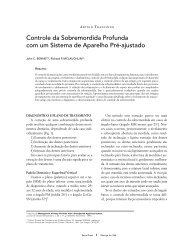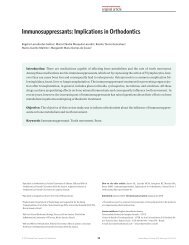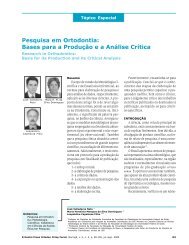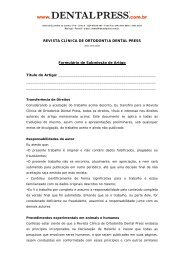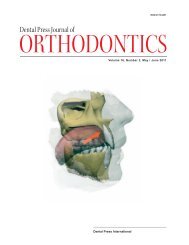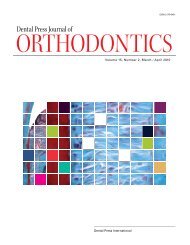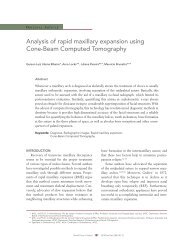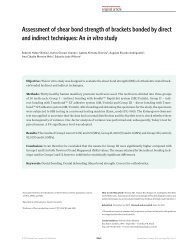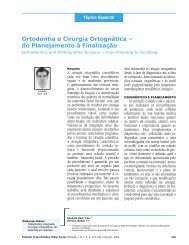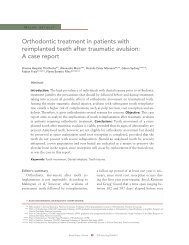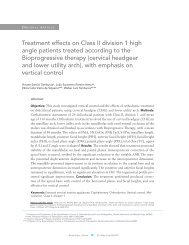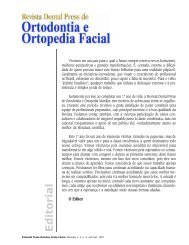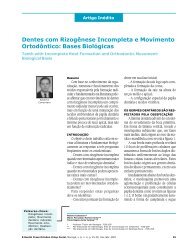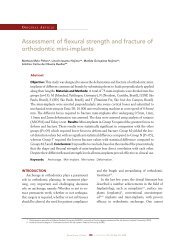Dental Press
Dental Press
Dental Press
You also want an ePaper? Increase the reach of your titles
YUMPU automatically turns print PDFs into web optimized ePapers that Google loves.
Souza RA, Figueiredo JAP, Colombo S, Dantas JCP, Lago M, Pécora JD<br />
Entretanto, é importante entender que os números<br />
utilizados em Endodontia são referenciais, não obrigatórios.<br />
Da mesma forma que a anatomia do canal<br />
radicular e as características dos instrumentos regem<br />
os princípios da instrumentação do canal dentinário,<br />
devem também ser consideradas na instrumentação<br />
do canal cementário. Em outras palavras, ela não deve<br />
ser preconizada sob princípios rígidos preestabelecidos.<br />
Cada caso deve merecer uma análise individual.<br />
Conclusão<br />
Conclui-se que a saída lateral do forame apical é<br />
mais frequente do que a saída no ápice radicular nos<br />
incisivos centrais superiores, e essa característica<br />
anatômica pode interferir no calibre do instrumento<br />
foraminal. Sugerem-se mais estudos sobre a posição<br />
do forame apical e sua relação com o calibre do instrumento<br />
foraminal nos incisivos centrais superiores e<br />
em outros grupos de dentes.<br />
Abstract<br />
Aim: This article analyzed the location of the apical foramen and<br />
its relationship with foraminal file size in maxillary central incisors.<br />
Methods: Eighty four human maxillary central incisors were<br />
used in this study. K-files of progressively increasing diameters<br />
were inserted into the root canal until it got snugly fit and the tip<br />
was visible at the apical foramen. The files were removed and<br />
teeth were cross-sectioned 10 mm from the root apex. The files<br />
were then reinserted, fixed with a cyanoacrylate-based adhesive,<br />
and sectioned at the same level as the root. The root apices were<br />
examined using a scanning electron microscope set at 140x magnification,<br />
the images were captured digitally and the results were<br />
subjected to Chi-square test. Results: It was observed that 63<br />
(75%) of the apical foramen emerged laterally to the root apex<br />
and 21 (25%) coincided with the apex. The results presented statistically<br />
significant differences 2 ג) =22.1; p=0.00). Conclusions:<br />
Lateral emergence of the apical foramen is more common than<br />
coincidence of the foramen with the apex in maxillary central incisors.<br />
This anatomical characteristic may have influence on determination<br />
of the foraminal file size.<br />
Keywords: Apical patency. Apical foramen. Endodontic instruments.<br />
© 2011 <strong>Dental</strong> <strong>Press</strong> Endodontics 67<br />
<strong>Dental</strong> <strong>Press</strong> Endod. 2011 apr-june;1(1):64-8



